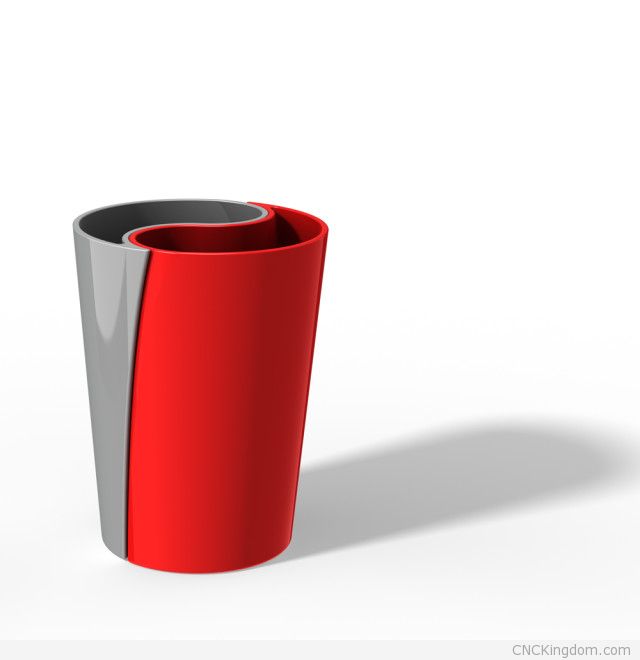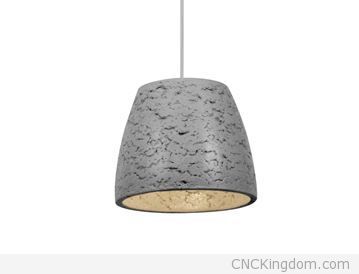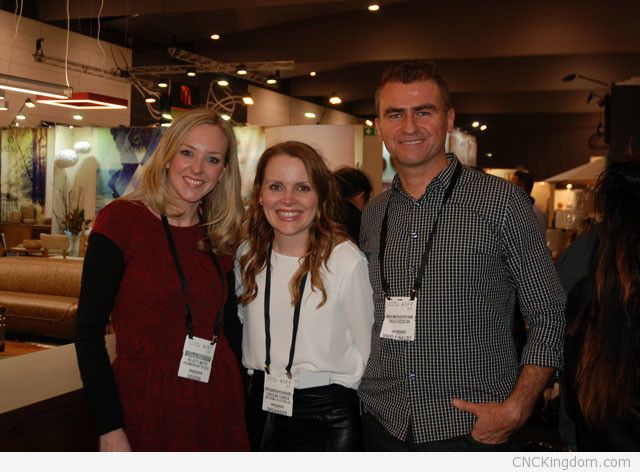Paulo Szostak, Freelance Designer at Paulo Szostak Design (Australia)
Why do I enjoy interviewing designers? Because they change your perspectives on everyday items and combined, they show you the gradual evolution of design both globally and locally as new technologies come to the forefront. Creativity is always there, it’s the tools and technologies that change, which allow new expressions to be created that were otherwise impossible or not cost effective on a mass production scale.
Paulo is making some serious waves in the design community with many of his designs being nominated for awards and recognition in Australia. He’s a design freelancer based out of Sydney, Australia.
You can contact him via https://au.linkedin.com/pub/paulo-szostak/4a/7ba/532

Having your mother teaching art and father a photographer / sculptor, you’d think design came very easy to you. Was this the case and why did you decide to follow in their footsteps and get into design yourself instead of doing something totally unrelated? Both my parents were teachers and although I had the opportunity, that’s the last thing I wanted to become.
Yes, you can bet that the entire “Visual Arts” environment played a very important role regarding my interest in Design, Photography and Art. I guess all that amount of images, colors, shapes, triggered a reaction in me, somehow I had to follow that path, it was unavoidable. And really enjoyable!
As a freelancer, I was wondering Paulo how you go about finding paid work? I’ve interviewed many industrial designers that end-up having their own firm but that’s usually after a decade or so of working for various design companies themselves before they gain the confidence to strike it on their own.
Working freelance has become very difficult and extremely competitive. In a digital world that’s connected through Internet, somebody from Philippines (or any other 3rd World country) will do the same job you want to do for much much less… it’s a win situation for customers, but not for us, Product Designers, Graphic Designers, Creatives, living in a super-expensive city as Sydney.
I really like your Tao Me Too cup, makes me think of ying-yang but how functional is it as a cup? Is it meant to be filled at once but for two people or are there perforations between the two elements making-up the cup so it can be easily drunk? Where did the idea come from and how long did it take you to design it?
Yes, Tao Me Too was inspired by the Tao symbol. It’s a way of feeling that 2 friends, a couple, two lovers, when they are together they create a perfect circle, meaning this, that there is a powerful connection between the two. And being able to have a drink in cups like that, somehow celebrates the great connection between this two persons.
No, the cups don’t have any perforations; they are separate entities, that when they are put together they form a perfect circle. They can be filled with different drinks.

Your Luna Tape Dispenser is awesome – what makes it especially nice is that it’s actually a design I could make with my 3D printer! I was wondering if you tried to license this design or any others you’ve made into commercial production? If you did, how did it go and how do you go about standing-out from all the other designers trying to also license their product ideas?
Well, of course, the first prototypes were made using 3D printing technology, the only way to do it, because of the voids. Then I ordered machined aluminium prototypes, and they came out really awesome. But they were too expensive, so, Luna is still there, looking for an inexpensive way of making it (I have some ideas in mind, but I’m busy with other projects right now).
Regarding the license/patents I did my research and it came out that it’s very expensive, complicated, and then in the end, somebody from China might copy it, make millions of them and you will not receive a cent out of it. It’s still like the Wild West regarding that. No protection for us, creatives of Australia.
Then you have the Infamous Matt Blatt (and others of course), how come in this First World country is that allowed? How come it can even be LEGAL, to sell rip-offs of great design from the world? I even saw that they are selling rip-offs of Trubridge, the New Zealand designer, it’s so so wrong. The government should shut down all this pirates stores, not only they are stealing, they are also making Australia look like a Third World country, with no rules and lots of corruption. Shame, absolute shame. Something has to be done, very soon.
I think we tend to forget with all our cool CNC toys that you can actually make some really cool and functional designs using only shredded paper like your Formicaio. I could see this build method as an incredibly efficient way to build a host of products. Do you think designers tend to forget simpler routes thanks to all the new toys we have access to make our virtual ideas a reality?

Absolutely right. People are totally amazed by the new technologies, and they completely forgot about the “old ways” of making things, that in many cases were really inexpensive and low-tech, and even possible to make them in a little garage, with limited hand and power tools.
Don’t get me wrong, I LOVE all the new technologies, but at the same time I love all the “Industrial Era” things from the past. I think us, as Product Designers should keep them in mind ALL the time, because sometimes they are a better solution for the design we have in mind.
I’ve started noticing a trend among many designers, mixing bamboo with white “material” which produces stunning contrasts and great build performance. I was wondering if you had any
material preferences and how you go about deciding what material works best for which project?
Right now I’m still doing research and experimenting with paper mache, I’m really into re-using materials, mostly because I’m concerned about the huge amount of waste that we Humans create every day.
This planet is our Home; we have to take good care of it, there’s no “maid” that will come after us to clean up our mess. “Love your Planet, Love your Home” should be our motto and mantra. And we, as Designers, have a responsibility regarding this, choosing Sustainable materials and manufacturing practices, thinking about ways of creating less waste, less pollution, less damage to our Home. By re-using old newspapers for my paper mache lights as a core material, I’m doing my little contribution to this.
Yes, mixing natural materials as bamboo with other type of materials looks very cool; I’m going to start testing different combinations with paper mache.

With Caroline Caneva (center, she’s the organizer of Vivid) and Felicity (one of the judges)
Anything else you’d like to add?
The latest news is that I’ve got selected for VIVID 2015 Design Competition in Melbourne. Tulip is an LED paper mache light that I designed on the computer, 3D printed the parts, created the molds, made copies out of paper mache and finally assembled it. It takes a lot more time and the process is a lot more complicated than my previous LED light on paper mache (Formicaio), but it came out looking really nice, with a cement/stone appearance.
According to the Judges I was a close second, they liked very much my light. It’s a pity that I didn’t win, but at the same time it’s great to know that I got so close. That’s comforting and makes me work harder for the next Design Competitions.
While I’m going to keep experimenting and designing with paper mache, I’m already brainstorming about re-using metal cans. Product Design is really fascinating.

Vivid finalists group photo (me on the right side, next to blue-hair girl)
Thank you Jon for the opportunity you gave me, to share some ideas and opinions on your website.
